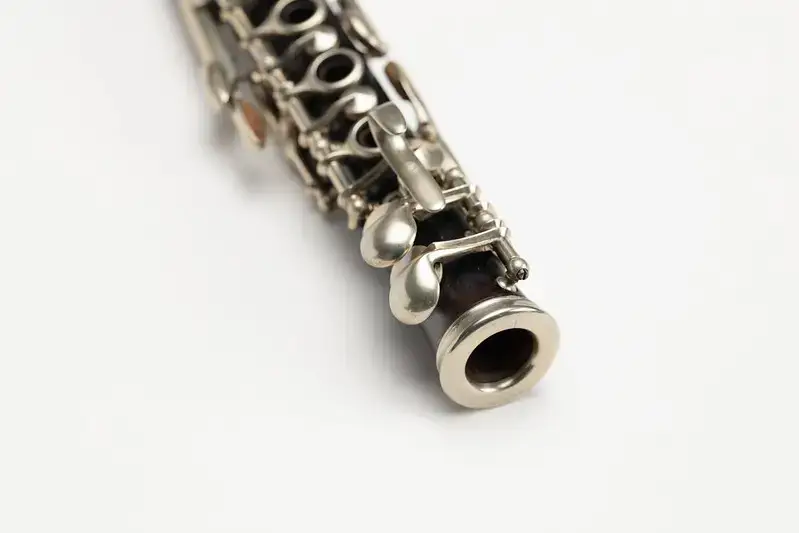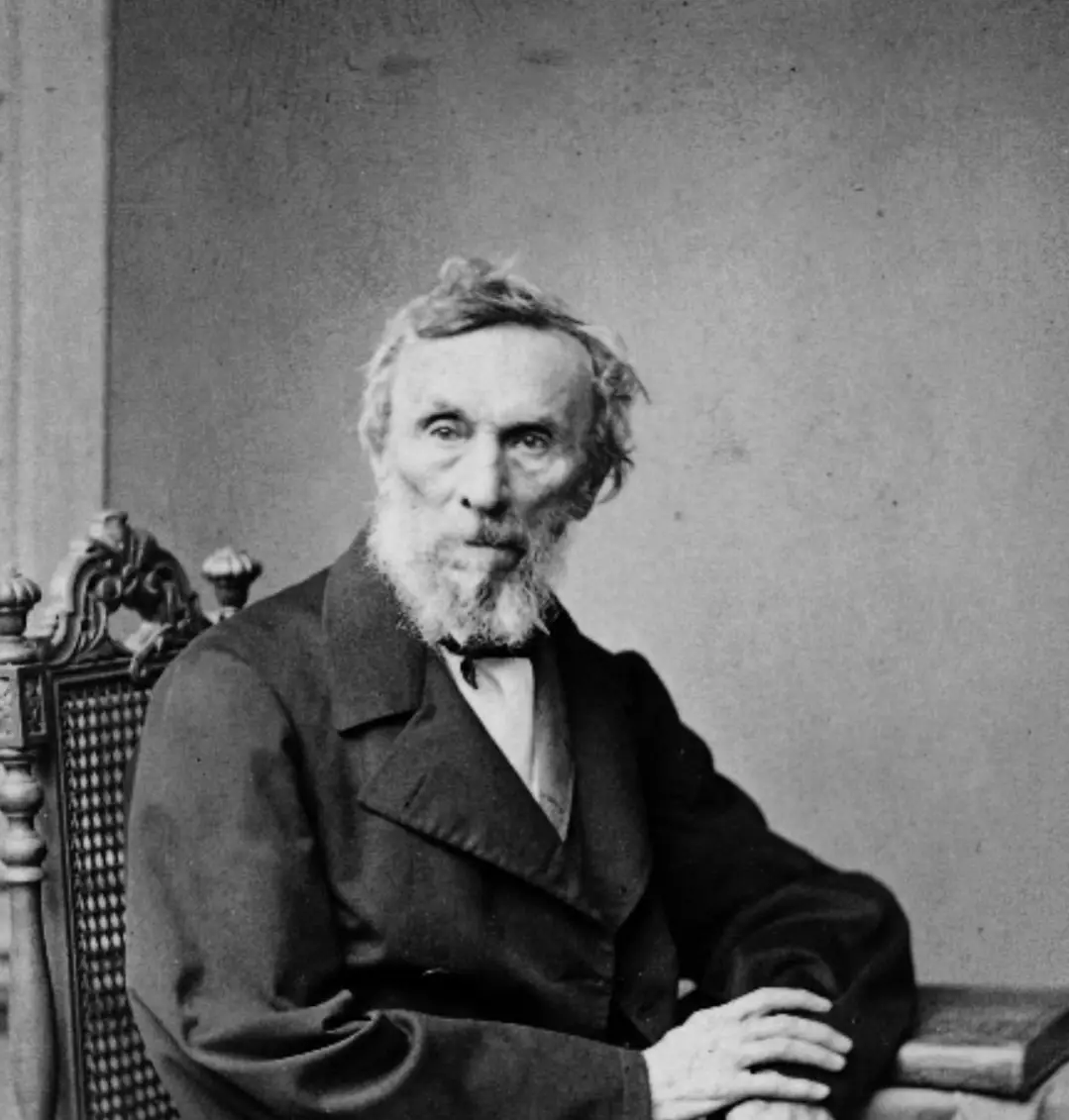***We continue the publication of a series of articles by Ludwig Böhm from “Commemorative essay for the 200th anniversary of the birth of Theobald Böhm, Munich, 1994.”
Read previous articles published in The Babel Flute, the predecessor of the Flute Almanac:
- On the Trail of my Great-great-grandfather Theobald Böhm, Flautist, Composer, Flute Maker, 1794–1881
- History of Theobald Böhm and correct spelling
- Theobald Böhm as a flutist
- Theobald Böhm as a composer
- Theobald Böhm as a flute maker
- Theobald Böhm’s comment on the open G sharp key
- The Inventor of the Bb thumb lever on the Böhm flute: Theobald Böhm or Giulio Briccialdi?
- Open Questions in the Theobald Böhm Research
Articles published on Flute Almanac:
Theobald Böhm was not keen on applying his system to the other woodwind instruments himself, because he could not play these and therefore always was dependant on the judgement of others (see Letter to Lermer from 16 March 1876). The reason, why in spite in this, he sent an oboe tube with holes without keys to the Industrial Exhibition in London in 1851, and a keyless oboe and bassoon tube with holes and description to the World Exhibition in Paris in 1855, and why he made an entire oboe with key mechanism about 1864 was that he followed the wishes of his adviser in acoustics Prof. Karl von Schafhäutl, the oboist Joseph Antoine Lavigne, London and the bassoonist Angelo Marzoli, Paris.
Flageolet
The first flageolet with Böhm system was most probably made in 1838 by Louis Auguste Buffet, Paris. As he received in this year a patent for improvements in the construction of flutes and alterations to the Böhm system, it can be assumed that he made, besides Böhm flutes, also flageolets with Böhm system from the beginning.

No early flageolets with Böhm system by Louis Auguste Buffet are known, but a later instrument, made about 1870 by Buffet-Crampon & C.ie, is located in the Münchner Stadtmuseum, Collection of Music (private loan).
A flageolet with Böhm system, which cannot be located today, was taken to Samoa together with an old system flute and a piano by the British author Robert Louis Stevenson (1850–1894) in about 1890 (see Masson, Rosaline: The Life of Robert Louis Stevenson. London 1923, p. 320). Later Stevenson published a poem with the title ,,To Theobald Boehm Flautist“, which shows that he considers the Böhm system devilish (In: The National Observer, London 17. 1. 1891, p. 227; Welch, 1896, p. 290–292; Masson, 1923, p. 321–323; Pan, London Juni 1985, p. 11).



Credit: Collection of Auckland Museum Tāmaki Paenga Hira, 2018.78.133
Clarinet
The first clarinet with Böhm system was made in 1839 by Louis Auguste Buffet, Paris, in cooperation with Hyacinthe Klosé (1808–1888), professor at the Paris Conservatory and exhibited in the same year in the Industrial Exhibition in Paris. In 1843, Klosé published a school for the Böhm clarinet, in 1844 the invention was patented.

With the exception of Germany, the instrument was successful all over the world in the following years.

It seems that Theobald Böhm only rather late occupied himself with the clarinet. This is documented by Ernst Pauer, who writes in his report of the London World Exhibition of 1862: “Mr. Böhm is at presentoccupied with the elimination of the defects of the clarinet.” But nothing is known about the results of these studies.

Early clarinets with Böhm system by Louis Auguste Buffet are located in:
- Munich, Münchner Stadtmuseum, Collection of Music 67–47
- London, Horniman Museum 28.362/14
- Oxford, University, Bate 462
- Paris, Conservatoire National Supérieur de Musique E.1673
Oboe
The first oboe with Böhm system was made in 1844 by Louis Auguste Buffet, Paris, in cooperation with Pedro Soler (1810–1850), 1836 prize-winner at the Paris Conservatory and exhibited at the Paris Industrial Exhibition in the same year. Also in 1844, the invention was patented.
One of the most distinguished virtuosos on the Böhm oboe was Joseph Antoine Lavigne (1816–1886), 1837 prize-winner at the Paris Conservatory, who had lived since 1841 in London and who cooperated, like Buffet, with Frédéric Triebert (1813–1878) and directly with Theobald Böhm. In 1870, Enrique Marzo, Madrid, a pupil of Soler, published a school for the Böhm oboe.

Only in 1850, Theobald Böhm made his first experiments with oboe tubes and he showed a presumably keyless model with holes at the London Industrial Exhibition in 1851. He also sent a “keyless oboe tube ofplumwood with holes” together with a description to the Paris World Exhibition in 1855. As a result of the time-consuming and expensive experiments, he made an oboe with keys together with Karl Mendler in about 1864, which is housed today in the University of Leipzig. Among his advisers was Joseph Antoine Lavignefrom London, who was in Munich in October 1850 and who presumably cooperated with the fabrication of the model, which was sent to London. It is questionable, whether Lavigne also participated in the production of the later models and the oboe with keys. His advisers in Munich were Prof. Schafhäutl and the oboist Carl Kern.

Later makers of the oboes with Böhm system were Frédéric Triebert, Paris, who received from Lavigne the model of Theobald Böhm, François Millereau, Paris, who recommended in his prospectus of about 1874 its use in military music and François Lorée, Paris, whose oboes had a narrower tube diameter and had a sound, which was close to the sound of traditional oboes. However, none of these oboes was successful.

Early oboes with Böhm system are located:
- by Louis Auguste Buffet, ca. 1850, in: Oxford, University, Bate 224
- by Frédéric Triebert, ca. 1860, in: Munich, Münchner Stadtmuseum, Collection of Music 86-16
- by François Millereau, ca. 1879, in: Berlin, private collection
- by François Lorée, ca. 1888, in: Berlin, private collection

Bassoon
The first bassoon with Böhm system was made in 1851 by Cornelius Ward (1805–1870), London, in cooperation with Giuseppe Tamplini (1817–1888), London; the preliminary works began in 1847. The invention was patented in Paris in 1851 and in London in 1853 and exhibited at the London Industrial Exhibition of 1851. Already in 1844, Louis Auguste Buffet had tried in cooperation with Prof. Eugène Jancourt, to make a bassoon with Böhm system, but had given it up after some time.

Theobald Böhm made first attempts with bassoon tubes in 1850, but he didn’t succeed in sending a model to the London Industrial Exhibition in 1851. Presumably at the request of Angelo Marzoli, he later made a model of a bassoon “with a straight tube of brass with the necessary tone holes and a wooden cap”, which was shown at the Paris World Exhibition together with a description and which served Triebert as a sample.
Shortly after this Exhibition in 1855, Frédéric Triebert in cooperation with Angelo Marzoli accomplished a bassoon with Böhm system, which is also mentioned in the Exhibition report.
In Germany, Heinrich Friedrich Haseneier, Koblenz, made bassoons with Böhm system in about 1860. None of these instruments was successful because of the different sound due to the larger tube diameter and the high cost.
Early bassoons with Böhm system are located:
- by Frédéric Triebert, ca. 1860, in: Amsterdam, private collection
- by Frédéric Triebert, ca. 1860, in: Bruxelles, Conservatoire 3119
- by Frédéric Triebert, ca. 1860, in: Paris, Conservatoire 510
- by Angelo Marzoli, 1864/1865, in: London, private collection (tenor bassoon)
- by Angelo Marzoli, 1864/1865, in: London, private collection
- by Angelo Marzoli, 1864/1865, in: Boston, Museum of Fine Arts 151
- by Heinrich Friedrich Haseneier, ca. 1860, in: Biebrich, Heckel collection
Saxophone
The first saxophone with Böhm system was made in 1888 by Arsène Lecomte (1818–1892), Paris and patented in the same year. Already in 1875, Pierre Goumas, Paris, had applied the key system of the left hand of the clarinet with Böhm system to the saxophone and received also a patent for it. A further development is the saxophone with Böhm system, for which Léon Leblanc, Paris, received a patent in 1926 and which he explained in a prospectus in about 1935. None of the instruments was successful however.
Early saxophones with half Böhm system (Goumas) and Böhm system (Lecomte, Leblanc) are located:
- by Pierre Goumas, ca. 1880, in: Gelsenkirchen, private collection
- by Arsène Lecomte, ca. 1890, in: Gelsenkirchen, private collection
- by Georges Leblanc, ca. 1935, in: Gelsenkirchen, private collection
Ludwig Böhm
ludwig.boehm@t-online.de | www.theobald-boehm-archiv-und-wettbewerb.de | www.theobald-boehm-shop.de
Address: Asamstrasse 6, 82166 Gräfelfing, Germany, tel. 0049-89-875367
Ludwig Böhm was born in Munich, where he studied English, French and Spanish at the University and was a teacher from 1981 to 1983. Inspired by a great exhibition in the Munich Municipal Museum in 1981 on the occasion of the 100th anniversary of the death of his great-great-grandfather Theobald Böhm (flautist, composer, flute-maker, inventor of the Böhm flute, Munich 1794–1881), he dedicated his life from that time on to keeping the memory of Theobald alive. As a result of more than 30 years of research, he published in 2012 all 88 compositions and arrangements of Theobald together with Dr. Raymond Meylan and in 2013 20 books and 4 translations from and about him.
He travelled to flute festivals in Japan, Australia, USA, Netherlands, Spain, Germany, Italy, Croatia, Luxembourg, Slovenia, China, Great Britain, Iceland, Thailand, Portugal, Chile, Poland and Armenia and presented a slide lecture about Theobald. He is the President of the Theobald Böhm Archive, founded in 1980, of the Theobald Böhm Society, founded in 1990 and of the Theobald Böhm Foundation, founded in 2014. In 2006, 2011 and 2016, he organized in Munich the 1st, 2nd and 3rd International Theobald Böhm Competition for Flute and Alto Flute.
List of professional open G# players
Current list of 480 professional open G sharp players can be seen in the homepage www.theobald-boehm-archiv-und-wettbewerb.de under “Open G sharp Key”. If you are a professional open G sharp player, who have not yet contacted Ludwig Böhm, please do so at ludwig.boehm@t-online.de to be added to the list.














